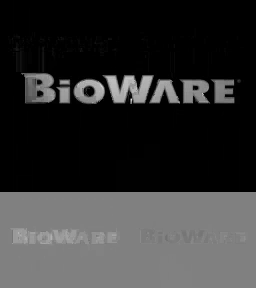As you may know (but definitely not care), NihAV has some limited support for Bink2 video. The problem in fixing it is that known samples are usually 720p video or mode which makes it hard to debug decoding past few initial frames (okay, older versions have smaller known videos so they’re likely to be fixed sooner). And of course the encoder is available only to the RAD customers to which I don’t belong. So in result I’ve decided to look at Actimagine VX codec once again.
I’ve looked at it four years ago but I could just study it but not write a decoder because of the binary. Essentially this codec happens on BigN DS consoles so you have to deal with raw ARM7 or ARM9 binary that (as it turns out) sets up its own segments (and the problems arise when you see absolute addresses to the areas not present there). So you load binary at addresses e.g. 0x2000000-0x20e1030 but in reality it contains also segments 0x1ffe800-0x1fff000 and 0x27e0000-0x27e4000. Thankfully Ghidra can not just load raw ARM binary but also add aliases to data as new segments. This allowed me to work on the decoder again and now I have more or less complete understanding of it and semi-working decoder for it as well, here’s an example:

Sample decoded frame.
Essentially it’s a simplified variant of H.264 with the following features: frames are split into 16×16 macroblocks that can be further recursively divided horizontally or vertically down to 2×2 blocks. Block can be coded in 24 different modes that boil down to full-pel motion compensation from one of three previous frames (without a motion vector, with motion vector, or with motion vector and an offset value that should be added to each pixel), intra prediction on whole block or intra prediction in 4×4 blocks. Also whether you have residue coded is also part of the mode (e.g. mode 11 is intra prediction without residue and mode 22 is intra prediction with residue). Residue is coded in 8×8 blocks comprising six 4×4 coefficient blocks, each block is coded in a way reminding of H.264: there are numbers for total number of non-zero coefficients, number of last non-zero coefficients being plus-minus one and number of zeroes dispersed between non-zero coefficients. Those being coded with variable-length codes that I could not access earlier was the blocker but not any more.
And there’s one curious feature of this codec that made it worth REing: instead of using plane prediction like H.264, this codec fills block in a recursive way. It interpolates bottom-right corner as an average of top-right and borrom-left neighbour pixels (e.g. [15,-1] and [-1,15] for 16×16 block; it also adds a delta to it in certain decoding modes), then it calculates halfway-bottom right and halfway-right bottom pixels (e.g. [15,7] and [7,15] for 16×16 block), then a centre pixel, and then repeats the process for each quarter (or half for some rectangular blocks). This is less computationally intensive than ordinary plane prediction and it seems to give nice results too.
I mentioned before that my decoder is far from perfect (and you can see it for yourself on that picture) but I know how to debug and improve it. I’m not trying to say that piracy is okay, but being able to find some .nds image with a game that has VX videos and using it with DeSmuME with GDB stub would help to debug the decoder but piracy is bad and so it’s not a proper way to do things.
As for audio counterpart, I should mention this: curiously enough there’s an opensource decoder for later MobiClip formats that seems to contain working Sx decoder for an audio used in VX files (it’s a pity the person who did it could not finish VX as well—why should I do the work myself instead of letting other people do my work for me?!). Unfortunately it’s mostly translated assembly so while it should work it’s mostly sub_XXX() doing various accesses to various positions of large byte array of decoder state. I’ll probably add it as well for completeness sake and document the formats properly after I fix the decoder (which should happen during this year too).
